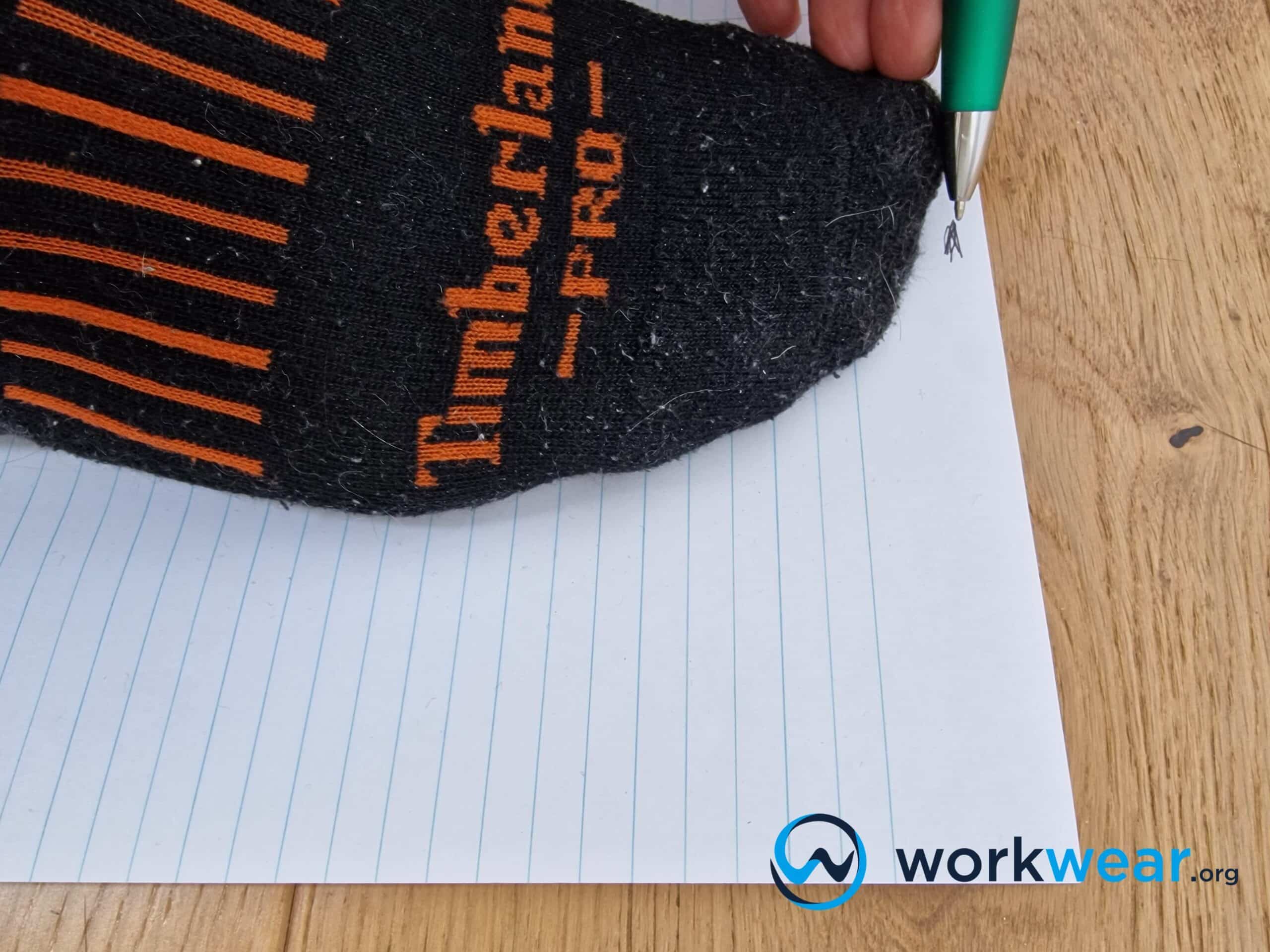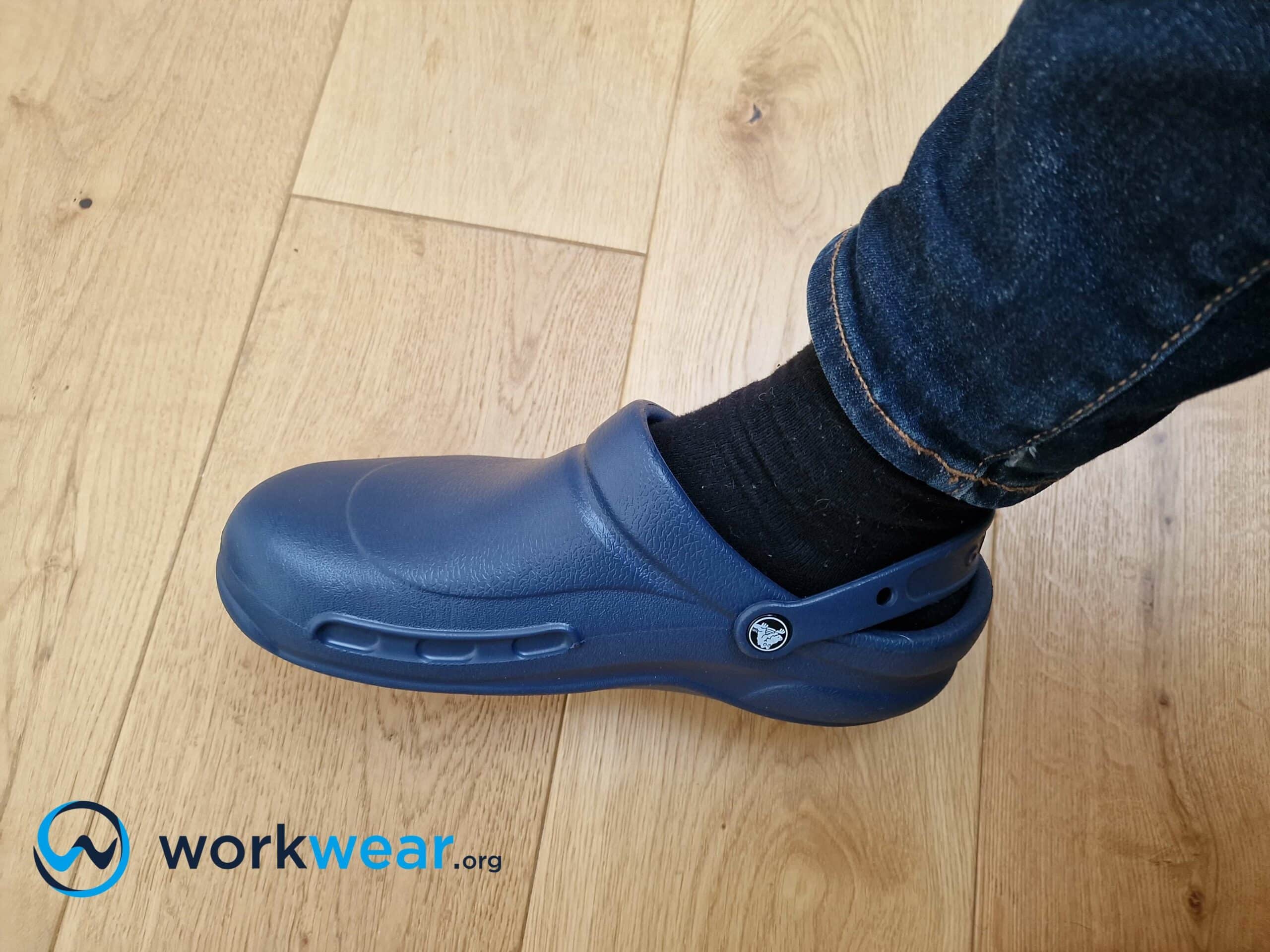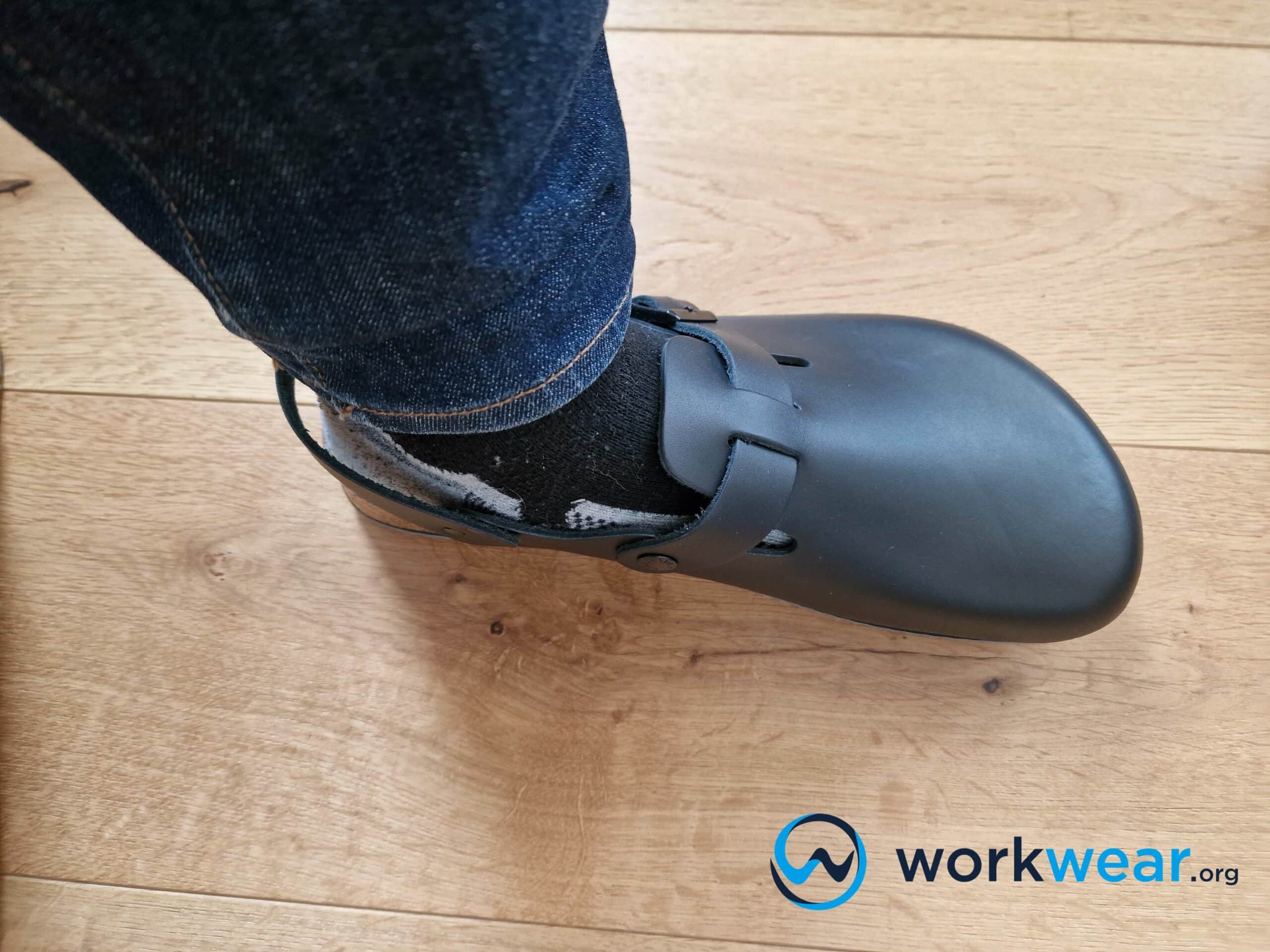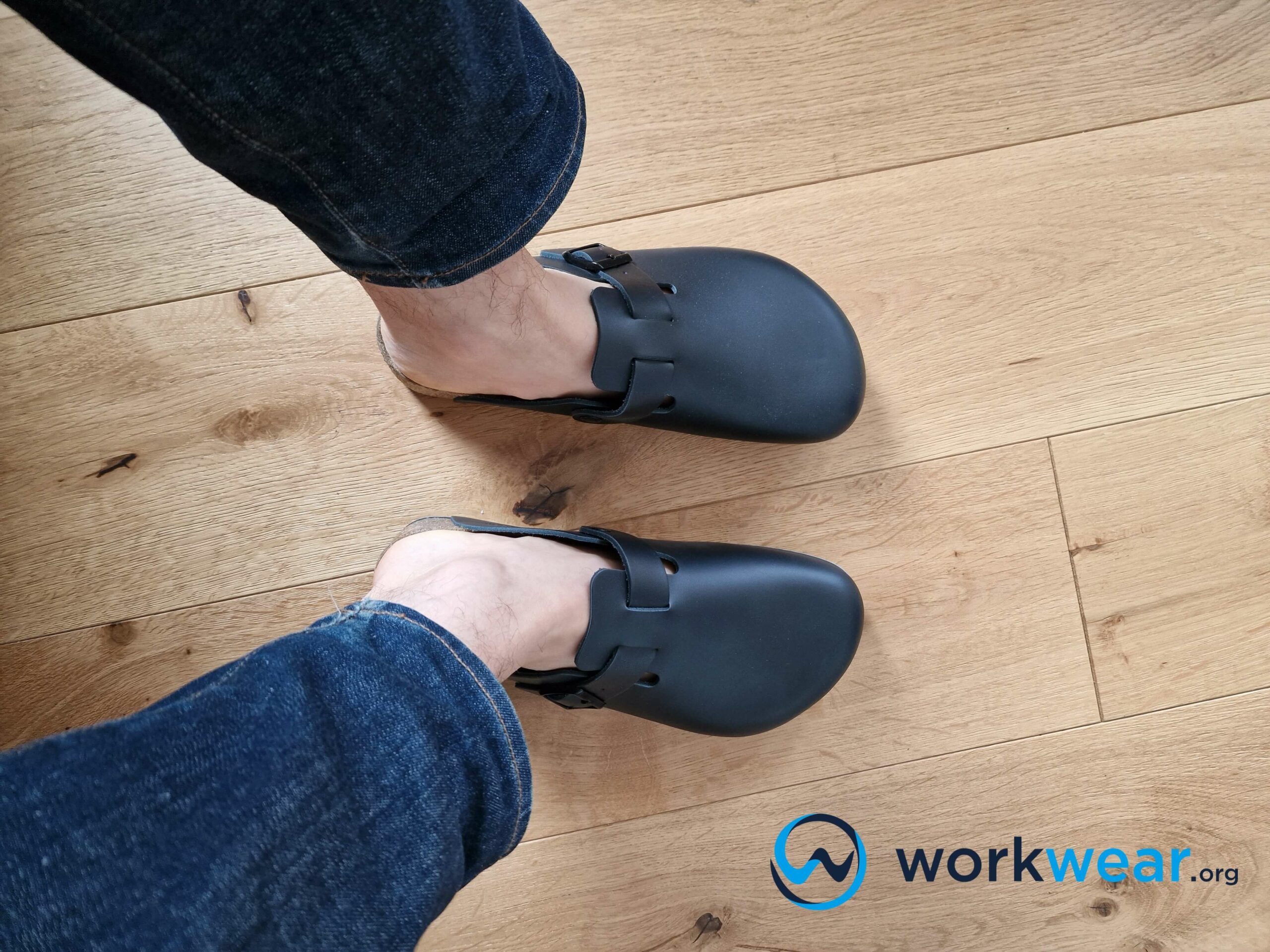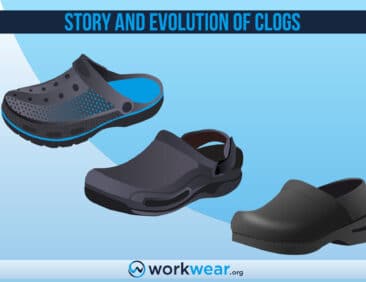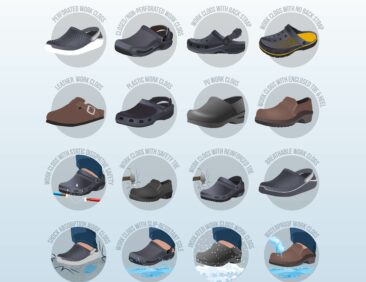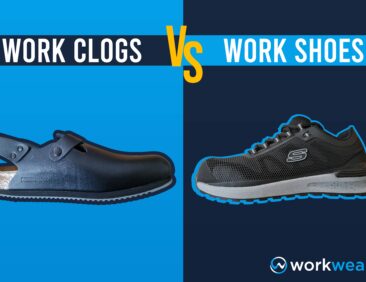How to Get the Right Size for Clogs – Step by Step guide for all major clog brands
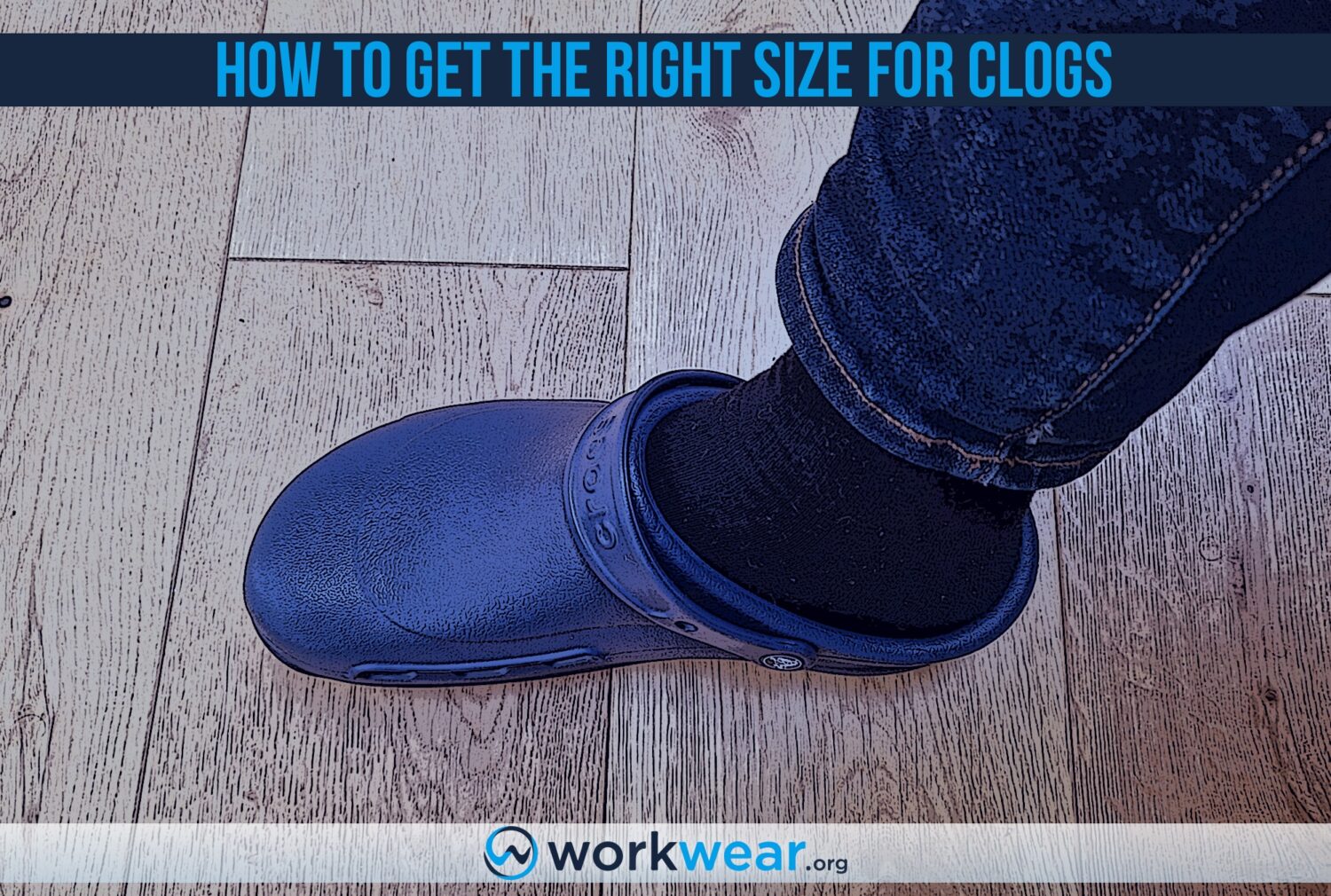
Whether they are used for work or leisure, all of us know that clogs are some of the most comfortable footwear options out there for a plethora of reasons.
However, their roomy designs enable a more comprehensive range of foot motion, but getting the right size can also be tricky. For that reason, we have created a detailed guide that will walk you through how to select the right size of clogs, and we have covered some of the top clogs brands, including Crocs, Birkenstock and Dansko.
Measuring the Feet
Knowing your feet’s measurements is essential for getting clogs in the correct sizes, especially when you don’t have the chance to try on the clogs in person. Armed with your unique measurement, you can use it as a guide to choose among the sizing options that clog manufacturers provide.
- If you plan on using socks with your clogs, wear the socks when you’re measuring your feet for more accurate sizing.
- Stand on a piece of paper that’s placed on a flat surface.
- Using a pen, outline the foot or make marks indicating the positions of the heel and tip of the longest toe.
- Measure the distance foot’s outline or the distance between the two outermost points lengthwise.
- Additionally, get the measurement across the widest portion of the ball of your foot, as this may be helpful when compared to the measurements for the clogs’ bases (often provided by manufacturers of clogs with wooden soles).
Trying On the Clogs and Getting the Right Size
Nothing beats trying on the clogs in person.
This is still the best way to ensure you’ll get a perfect size, especially since different materials and construction methods can greatly affect the clogs’ fit across varying size options.
Here are the things to look for when trying on the clogs to ensure you get the right size.
- The heel should be sitting on the clogs’ footbed, with the foot taking up the entire length of the footwear. If the heel sits on top of the ridge at the back or slips out, the size is too small.
- The heel needs to be able to move up and down easily. This is the same even for clogs with raised or enclosed backs, which work to keep the heels from slipping out but don’t hold them in place.
- The toes should not touch the tip of the toe box. This ensures that the foot can flex naturally without pushing the toes into the end of the toe box, which can result in the toes becoming painfully bent and pinched.
- The upper should have a snug fit over the top of the foot (or instep) – but still have enough space left so that the foot can flex comfortably.
- Aside from having the right length and width, the contours of the clog’s sole (including the sides and arch) should also match the foot’s shape for maximum comfort and support.
- In certain roomy styles – such as the Crocs Classic Clog – the foot typically doesn’t touch the sides of the clog, and there should be plenty of space on top as well.
Sizing Details Across Popular Clogs Brands
Clogs have sizing details that vary depending on the manufacturer. Here are the details for three of the most popular brands that manufacture high-quality clogs.
Crocs
Crocs clogs have the following sizing types: Womens, Mens, Kids, and Unisex. The indicators for the sizing types are as follows:
| Sizing Type |
Indicator |
|---|---|
| Womens |
W (for example, W7) |
| Mens |
M (for example, M10) |
| Kids |
C or J (for example, C5 or J4) |
| Unisex |
M and W (for example, M6 W8) |
Crocs uses American sizes on its footwear. The chart below makes converting the sizes easier and getting the most suitable one across different styles and genders.
Womens
| UK |
EUR |
US |
|---|---|---|
| 3 |
35-36 |
W5 |
| 4 |
36-37 |
W6 |
| 5 |
37-38 |
W7 |
| 6 |
38-39 |
W8 |
| 7 |
39-40 |
W9 |
| 8 |
41-42 |
W10 |
| 9 |
42-43 |
W11 |
Mens
| UK |
EUR |
US |
|---|---|---|
| 6 |
39-40 |
M7 |
| 7 |
41-42 |
M8 |
| 8 |
42-43 |
M9 |
| 9 |
43-44 |
M10 |
| 10 |
45-46 |
M11 |
| 11 |
46-47 |
M12 |
| 12 |
48-49 |
M13 |
Children
| UK |
EUR |
US |
|---|---|---|
| 4 |
19-20 |
C4 |
| 5 |
20-21 |
C5 |
| 6 |
22-23 |
C6 |
| 7 |
23-24 |
C7 |
| 8 |
24-25 |
C8 |
| 9 |
25-26 |
C9 |
| 10 |
27-28 |
C10 |
| 11 |
28-29 |
C11 |
| 12 |
29-30 |
C12 |
| 13 |
30-31 |
C13 |
| 1 |
32-33 |
J1 |
| 2 |
33-34 |
J2 |
| 3 |
34-35 |
J3 |
Unisex
| UK |
EUR |
US |
|---|---|---|
| 3-4 |
36-37 |
M4 / W6 |
| 4-5 |
37-38 |
M5 / W7 |
| 5-6 |
38-39 |
M6 / W8 |
| 6-7 |
39-40 |
M7 / W9 |
| 7-8 |
41-42 |
M8 / W10 |
| 8-9 |
42-43 |
M9 / W11 |
| 9-10 |
43-44 |
M10 / W12 |
| 10-11 |
45-46 |
M11 |
| 11-12 |
46-47 |
M12 |
| 12 |
48-49 |
M13 |
| 13 |
49-50 |
M14 |
Birkenstock
Birkenstock clogs use European sizing, and the brand provides size and width conversion charts for more accurate sizing selections.
Women
| US Size |
Birkenstock Size |
|---|---|
| 4 – 4 ½ |
35 |
| 5 – 5 ½ |
36 |
| 6 – 6 ½ |
37 |
| 7 – 7 ½ |
38 |
| 8 – 8 ½ |
39 |
| 9 – 9 ½ |
40 |
| 10 – 10 ½ |
41 |
| 11 – 11 ½ |
42 |
Men
| US Size |
Birkenstock Size |
|---|---|
| 7 – 7 ½ |
40 |
| 8 – 8 ½ |
41 |
| 9 – 9 ½ |
42 |
| 10 – 10 ½ |
43 |
| 11 – 11 ½ |
44 |
| 12 – 12 ½ |
45 |
| 13 – 13 ½ |
46 |
| 14 – 14 ½ |
47 |
| 15 – 15 ½ |
48 |
| 16 – 16 ½ |
49 |
| 17 – 17 ½ |
50 |
Kids
| US Size |
Birkenstock Size |
|---|---|
| 6 – 6 ½ |
24 |
| 7 – 7 ½ |
25 |
| 8 – 8 ½ |
26 |
| 9 – 9 ½ |
27 |
| 10 – 10 ½ |
28 |
| 11 – 11 ½ |
29 |
| 12 – 12 ½ |
30 |
| 13 – 13 ½ |
31 |
| 1 – 1 ½ |
32 |
| 2 – 2 ½ |
33 |
| 3 – 3 ½ |
34 |
Men's Widths
| US |
Birkenstock |
|---|---|
| D – EE |
Regular |
| B – C |
Narrow |
Women's Widths
| US |
Birkenstock |
|---|---|
| C – D |
Regular |
| A – B |
Narrow |
Dansko
Dansko clogs follow European (EU) sizing in whole-size options. Most of the brand’s styles are offered in medium width, but clogs also fit narrow and wide. The size comparison chart below makes determining each EU size’s corresponding American option easier.
Womens
| US |
EU |
|---|---|
| 4.5 – 5 |
35 |
| 5.5 – 6 |
36 |
| 6.5 – 7 |
37 |
| 7.5 – 8 |
38 |
| 8.5 – 9 |
39 |
| 9.5 – 10 |
40 |
| 10.5 – 11 |
41 |
| 11.5 – 12 |
42 |
| 12.5 – 13 |
43 |
Mens
| US |
EU |
|---|---|
| 7.5 – 8 |
41 |
| 8.5 – 9 |
42 |
| 9.5 – 10 |
43 |
| 10.5 – 11 |
44 |
| 11.5 – 12 |
45 |
| 12.5 – 13 |
46 |
| 13.5 – 14 |
47 |
| 14.5 – 15 |
48 |
Things to Keep in Mind to Get the Right Size for Clogs
- For those with narrow feet, looking for clogs with slimmer silhouettes that can fit more snugly over the feet is a good idea. Downsizing is not always best because this can result in the toes touching the tip of the clogs.
- Clogs with leather uppers may need some time to soften and may initially feel uncomfortably tight on the foot. After a while, they will soften and follow the feet’s shape for better comfort.
- The uppers of rubber clogs will not soften further or mold to the feet’s contours, so it’s crucial to get the right sizing from the start.
- Enclosed clogs and those made with real thick leather can feel uncomfortably tight on feet with high insteps. It’s best to try on the clogs personally to determine the best fit or choose clog styles featuring softer or more flexible uppers for improved comfort.
- Hand-stapled clogs, such as those made by Dansko, fit differently. To get the right size for these clogs, it’s still best to try them on in-store before purchase.
- The clog’s contours need to correspond to the foot’s shape. Otherwise, even clogs with the exact length match with the foot won’t function and feel as well as expected.
Personal Testing Experience
Here are our experiences while trying out two high-quality clogs. The Crocs Classic All Terrain Clog showcased an ultra-lightweight profile thanks to the proprietary Croslite construction. The material was also remarkably flexible, providing much-needed support without getting in the way of the foot’s natural motion. The clog had an adjustable back strap for better-fit customization, while the outsole was more rugged than other Crocs clogs and delivered superior traction. It had large ports on top for continuous ventilation, but the holes also allowed liquids to get in quickly.
On the other hand, the Birkenstock Tokio Super Grip Clog was built with a leather upper that blended nicely in professional settings but also looked great with casual outfits. It was also very lightweight, featuring the signature cork-latex footbed that delivered exceptional arch support and an almost personalized level of comfort throughout long workdays. The strap had a pin buckle that could be used to adjust the clog’s fit, while the Super Grip rubber outsole offered exceptional traction even on slippery floors. This clog is considerably more expensive than other clogs, although its quality and durability more than justify the price difference.
Conclusion
Clogs offer superior convenience and comfort, making them suitable for hours of walking or standing – for work or leisure. They come in varying styles that fit just as differently, so getting the right size is crucial to maximizing the clogs’ remarkable qualities and performance. The materials used, and construction styles significantly impact how the clogs fit. By considering these factors and using the size comparison charts (provided by the different brands), getting the clogs in the correct size is easier to achieve for better foot comfort and stability.
FAQs
- How can buckles or elastic portions on clogs’ uppers improve fit?
- Elastic sections and buckles placed on the clogs’ uppers can help loosen or tighten the clogs. This makes it easier to adjust the fit for better comfort – such as for feet with high insteps that will feel more comfortable with an upper that’s more elastic.
- Are open-back clogs easy to walk in?
- Yes, especially if they come with back straps that can keep the heel secure without getting in the way of foot mobility.
- Do all clogs have roomy designs?
- Clogs are generally known and loved for their roomy styles. However, some designs fit more snugly than others, and it’s good to scrutinize the styling details when choosing the right size option.
- Do clogs with enclosed back designs fit like regular shoes?
- No, clogs still more loosely than shoes, even with closed-back designs. The raised back doesn’t hold the heel in place like regular shoes do and instead allows the heel to move up and down with every step.
